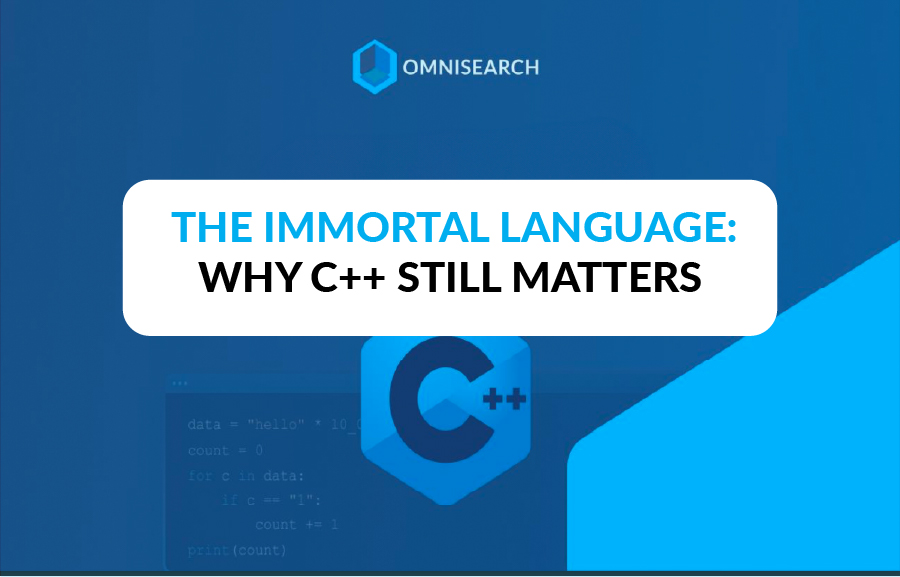What we learned from raising Omnisearch’s $450k pre-seed round
No items found.
Published:
August 20, 2024
Topic:
Founder story
.png)
2021 has been a pretty amazing year for Omnisearch. Having started initial work on Omnisearch at the end of 2020, we entered the new year with a working MVP yet no revenue, no significant partnerships, and no funding. Fast forward to the end of 2021, and we now have fantastic revenue growth, a partnership with a public company, and a far more powerful, complete and polished product.
But one milestone really changed Omnisearch’s trajectory: our $450,000 USD pre-seed round by GoAhead Ventures. In this post I want to share the story of how it came about and offer a couple of takeaways to keep in mind when preparing for fundraising.
The story
Contrary to most advice, my co-founder Matej and I didn’t allocate a specific time to switch to “fundraising mode” but rather talked to investors on an ongoing basis. It was a bit of a distraction from working on the product, but on the positive side we were able to constantly get feedback on the idea, pitch, go-to-market strategy and hiring, as well as hearing investors’ major concerns sooner rather than later.
That being said, our six-month long fundraising efforts weren’t yielding results - we talked to about twenty investors, mostly angels or smaller funds, with no success. The feedback was generally of the “too early for us” variety (since we were still pre-revenue), with additional questions about our go-to-market strategy and ideal customer persona.
The introduction to our eventual investors, California-based GoAhead Ventures, came through a friend who had pitched them previously. We wrote a simple blurb and sent our pitch deck. We then went through GoAhead’s hyper-efficient screening process, consisting of a 30-minute call, a recorded three-minute pitch, and filling out a simple Google doc.
Throughout the whole process, the GoAhead team left an awesome impression thanks to their knowledge of enterprise software and their responsiveness. They ended up investing and the whole deal was closed within two weeks, which is super fast even by Silicon Valley standards. While our fundraising experience is a single data point and your case might be different, here are the key takeaways from our journey.
.png)
Perseverance wins: Like I said above, we talked to about twenty investors before we closed our round. Getting a series of “no”s sucks, but we took the feedback seriously and tried to prepare better for questions that caught us off guard. But we persevered, keeping in mind that from a bird’s eye perspective it’s an amazing time to be building startups and raising funds.
Focus on traction: Sounds pretty obvious, right? The truth is, though, that even a small amount of revenue is infinitely better than none at all. One of the major differences between our eventual successful investor pitch and the earlier ones was that we had actual paying customers, though our MRR was low. This allows you to talk about customers in the present tense, showing there’s actual demand for your product and making the use cases more tangible. And ideally, highlight a couple of customer testimonials to boost your credibility.
Have a demo ready: In Omnisearch’s case, the demo was oftentimes the best received part of the pitch or call. We’d show investors the live demo, and for bonus points even asked them to choose a video from YouTube and then try searching through it. This always had a “wow” effect on prospective investors and made the subsequent conversation more exciting and positive.
Accelerators: Accelerators like Y Combinator or Techstars can add enormous value to a startup, especially in the early stages. And while it’s a great idea to apply, don’t rely on them too heavily. Applications happen only a few times a year, and you should have a foolproof fundraising plan in case you don’t get in. In our case, we just constantly looked for investors who were interested in our space (defined as enterprise SaaS more broadly), using LinkedIn, AngelList, and intros from our own network.
Practice the pitch ad nauseam: Pitching is tough to get right even for seasoned pros, so it pays to practice as often as possible. We took every opportunity to perfect the pitch: attending meetups and giving the thirty-second elevator pitch to other attendees over beer and pizza, participating in startup competitions, going to conferences and exhibiting at our own booth, attending pre-accelerator programs, and pitching to friends who are in the startup world. As our friends at Wasp say, the pitch gets better after the 50-th time!
Show an understanding of the competition: Frankly, this was one of the strongest parts of our pitch and investor conversations. If you’re in a similar space to ours, Gartner Magic Quadrants and Forrester Waves are an awesome resource, as well as sites like AlternativeTo or Capterra and G2. By thoroughly studying these resources we gained a great understanding of the industry landscape and were able to articulate our differentiation more clearly and succinctly. Presenting this visually in a coordinate system or a feature grid is, from our experience, even more effective.
Remember it’s just the beginning! Getting your first round of funding is just the beginning of the journey, so it’s important to avoid euphoria and get back to building and selling the product as soon as possible. While securing funding enables you to scale the team, and is a particular relief if the founders had worked without a salary, the end goal is still to build a big, profitable, and overall awesome startup.
And there we go! This is the long and short of Omnisearch’s fundraising journey and I hope you find it useful. If there’s anything I can do to help, feel free to connect with me on LinkedIn or Twitter.






